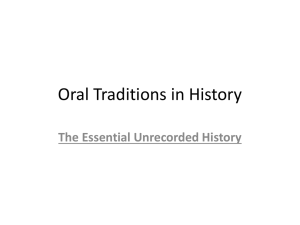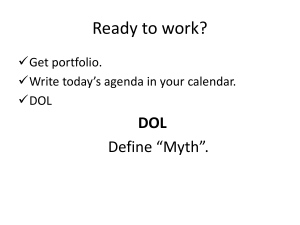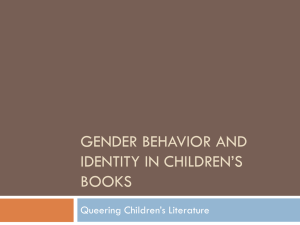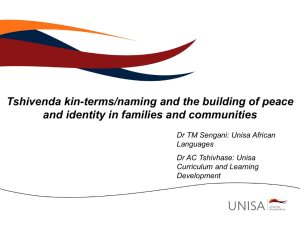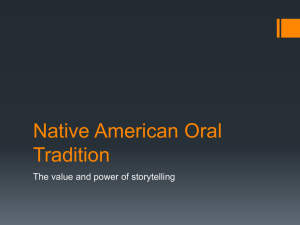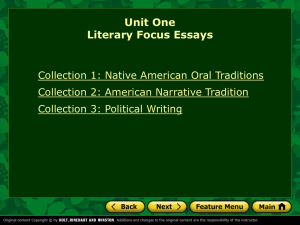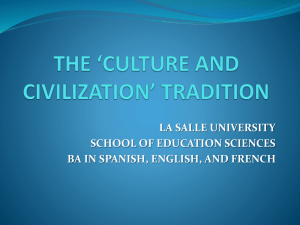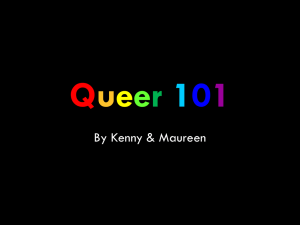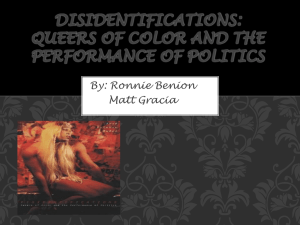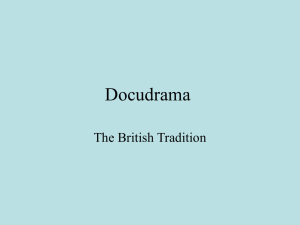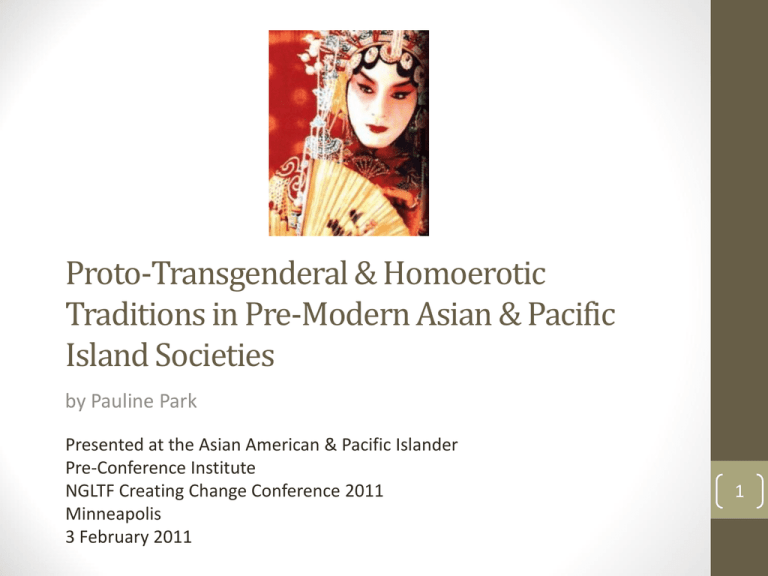
Proto-Transgenderal & Homoerotic
Traditions in Pre-Modern Asian & Pacific
Island Societies
by Pauline Park
Presented at the Asian American & Pacific Islander
Pre-Conference Institute
NGLTF Creating Change Conference 2011
Minneapolis
3 February 2011
1
Queer API History
• Misconception that “lesbian, gay, bisexual, and transgender”
(LGBT) constitutes a purely modern phenomenon
• Pre-modern Asian and Pacific Islander societies had what
could be termed “proto-transgenderal” and homoerotic
traditions
• Importance of LGBT/queer APIs to address misconception in
API communities: identification as LGBT due to white
influence
2
3
Qing dynasty (18th c.) illustration of male love observed
Chinese Queer History: Male
Homosexuality
• China has homoerotic and proto-transgenderal traditions
going back centuries
• “Passion of the cut sleeve” (duànxiù 断袖)
• The love of Emperor Ai of Han (27 BC-1 AD) for his male favorite, Dong
Xian (董賢)
• “Half-eaten peach” (yútáo 余桃)
• Zhou dynasty Duke Ling of Wei (衛靈公) (534-403 BC) and his
male lover, Mizi Xia(彌子瑕)
• Since times of Mizi Xia and Dong Xian, the “half-eaten peach”
and the “cut sleeve” have been euphemisms for male
homosexuality in China
4
5
Qing dynasty illustration of male love (18th c.)
Chinese Queer History: Beijing
Opera
• Tradition of the female
role (dan 旦) in Beijing
opera, as dramatized in
Farewell My Concubine,
the 1993 film by Chen
Kaige, starring Leslie
Cheung as the male
actor and singer who
plays women’s roles on
stage.
6
Chinese Queer History:
Lesbianism
• Tradition of lesbianism and female bisexuality in traditional
China, though more difficult to find documentation than male
homosexuality and bisexuality
• Golden Orchid Association (Jinglanhui) was a Chinese
women’s organization that celebrated “passionate
friendships” and embraced same-sex intimacy
• Origins of Jinglanhui have been traced as far back as Qing dynasty
• Members of group participated in ceremonies of same-sex
unions, complete with wedding feasts and exchange of ritual gifts
(see Cassell’s Encyclopedia of Queer Myth, Symbol & Spirit, 1997,
p. 161)
• Women of Golden Orchid Association engaged in sexual practices
described as “grinding tofu”
7
Lesbians & Religious Orders in
China
• “Rubbing Mirror Society” founded in Guandong province in
17th century by Buddhist nun, and members participated in
same-sex unions (see Cassell, p. 237)
• Eventually known as the “Ten Sisters” by 19th century, the society
was called the Mojing Dang
• In mid-19th century, philosophy of Jaitang became popular
(see Cassell, p. 108)
• Emerging out of syncretic Taoist/Buddhist milieu, philosophy of
Jaitang expressed itself through communal living in “vegetarian
halls” or “spinsters’ houses,” which emphasized gender equality
among members who revered Guanyin, the Buddhist bodhisattva
of compassion
8
Images of Guanyin
9
Guanyin, the bodhisattva of compassion
Guanyin statue in a Chinese temple in Thailand
Guanyin, Transgendered Deity?
• Called the “Goddess of Mercy,” Guanyin—“She who hears the
cries of the world”—is a manifestation of Avalokiteśvara, the
male Buddha of the Pure Land who transforms into a female
one (Vern L. Bullough, cited in Cassell, 1997)
• Revered by Chinese Buddhists and Daoists, Guanyin has
special place in hearts of transgendered Chinese and Asians
who know the transgenderal version of deity’s story
• In Tibet, the Gelug (or “Gelugpa”—”Yellow Hat”) sect of
Buddhism has been associated with same-sex relations
between monks in its institutions, especially in the monastery
at Sera (see Cassell, p. 10)
10
Japanese Male Homosexuality
• Long tradition of homosexuality in Japan, from samurai to
Buddhist monks (see Gary Leupp, Male Colors: The
Construction of Homosexuality in Tokugawa Japan, University
of California, 1997)
• Japanese used several terms to refer to male homoeroticism,
including nanshoku (male eros), wakashudo (the way of
youths), nando (the way of men), bido (the beautiful way)
and hido (the secret way)
• The Great Mirror of Male Love (Nanshoku Okagami) is
collection of 40 homoerotic stories from 1687 by Ihara Saikaku
(1642-93) that depicts nanshoku tradition of male love in its
variety
11
Japan & the Kabuki Onnagata
• Tradition of the onnagata, male actors who played women’s
roles in the kabuki theater
A samurai kisses a kabuki actor in a
shunga hand scroll
(Miyagawa Issho, c. 1750)
Tamasaburo, the celebrated kabuki
onnagata
12
Korean Queer History
• Korea has at least four distinct traditions that anticipate
contemporary LGBT identities
• (1) Hwarang warriors—sometimes referred to as the “flower boys
of Silla” (dynasty that united the Korean peninsula in 7th
century)—elite corps of archers who dressed in long flowing
gowns and wore make-up
• (2) Namsadang, troupes of actors who went from village to
village
• Among namsadang, youths played women’s roles, as in Elizabethan
theater. It is said that youths were often lovers of older men in corps.
• Homoeroticism of namsadang tradition was dramatized in The King
and the Clown (Wang-ui Namja 왕의 남자), 2005 Korean film by Lee
Jun-ik. Film depicts relationship between Yeonsangun, king of Joseon
(Chosun) dynasty, who falls in love with a beautifully epicene young
actor from a namsadang troupe.
13
The King and the Clown starred Gam Wu-seong as Jangsaeng (left), Lee Jun Ki as Gonggil
(right), and Jeong Jin-yeong as King Yeonsan (center) and broke all box office records at the
time of its release in 2005-2007.
14
Korean “Boy-Wives” &
Shamans
• (3) Tradition of “boy-wives,” in which youths wed older men and
are recognized as wives of the men
• (4) Paksu mudang, male shaman who performed women’s roles
in ancient shamanic, spiritual tradition that Koreans brought into
Korean peninsula from eastern Siberia in pre-historic times
15
Korean mudang
South and Southeast Asian
Queer History
• In South Asia and Southeast Asia, many examples of
homoerotic and proto-transgenderal traditions
• Kathooey (often translated as “ladyboys”) of Thailand
• Hijra of India, eunuchs who have undergone ritual castration in
order to serve as temple priestesses in a tradition that has
survived in India to the present day (see, for example, Michael G.
Peletz, “Transgenderism and Gender Pluralism in Southeast Asia
since Early Modern Times,” in Current Anthropology, Volume 47,
Number 2, April 2006)
16
Thailand & the Kathooey
• The 2003 film
Beautiful Boxer (บิวตี ้ฟูล
บ๊ อกเซอร์ ) tells the true
story of Parinya
Charoenphol (“Nong
Toom”),
a kathooey who
becomes a champion
in the sport of Thai
kick boxing (muay
thai)
17
Pacific Islander Identities
• Pacific Islands have many homoerotic and proto-transgenderal
traditions
•
•
•
•
•
•
•
mahu in Hawai’i
fa’afafine in Samoa (see film The Transgender Taboo)
fakaleiti in Tonga
vaka sa lewa lewa in Fiji
rae rae in Tahiti
fafafine in Niue
akava’ine in the Cook Islands (New Zealand AIDS Foundation,
cited in To Be Who I Am: Kia noho au ki toku ano ao, a report by
the New Zealand Human Rights Commission, 2007, p. 25)
18
New Zealand & the Maori
• Maori of New Zealand have several different terms for those
whose gender identity is different from their sex assigned at
birth, including whakawahine, whakaaehinekiri, tangata ira
wahine, hinehi, and hineua (for transgendered women) and
tangata ira tane (for trans men) (op cit.)
transman (tangata ira tane) and transwoman (hineua)
(Rebecca Swan photos for the New Zealand Human Rights Commission report on
transgender discrimination, To Be Who I Am)
19
India & the Hijra
• Individuals nowadays termed as transgender, who occupy
shamanic roles in their cultures’ spiritual traditions is
significant in discussing proto-transgenderal identities and
practices in pre-modern Asian and Pacific Islander societies
• In India, as mentioned before, there is tradition of the hijra,
whose lives are documented in Harsh Beauty, a 2005 film by
Alessandra Zeka
• Hijra undergo ritual castration and devote themselves to Hindu
goddess Bahuchara Mata, living in group houses known
as jemadh, as described in Serena Nanda’s classic work, Neither
Man Nor Woman: The Hijras of India (1990)
20
Korea & the Mudang
• Similarly mentioned before, there is the mudang—a priest-like
figure in Altaic shamanism
• In that culture—the oldest level of Korean society, predating
introduction of Confucianism, Taoism, and Buddhism into
peninsula by the Chinese—the mudang was always a woman but
not necessarily female
• Significant number of mudang were male, and some paksu
mudang (male mudang) may have lived as women as well as
performed sacred rites and rituals of the mudang spiritual
tradition
21
Images of the Hijra & the
Mudang
Hijra in the film Harsh Beauty
Korean mudang
22
Vietnam, the Đạo Mẫu tradition
& the đồng cô
• Vietnam also has shamanic tradition, known as Đạo Mẫu,
presided over by shamans, many of whom are transgendered
• Filmmaker Nguyễn Trịnh Thi documented this tradition in Love
Man Love Woman, her 2007 documentary about Master Lưu
Ngọc Đức, one of the most prominent spirit mediums in Hanoi
• In the Đạo Mẫu tradition, it is usually feminine males (referred to
as đồng cô) such as Master Lưu Ngọc Đức who presides over
the country’s popular worship of mother goddesses
• Master Lưu Ngọc Đức is but one of many examples of prototransgenderal shamanic traditions that have survived into 21st
century
23
Sulawesi & the Bissu
• Another such tradition is that of the bissu, documented in the
2005 film, The Last Bissu: Sacred Transvestites of South
Sulawesi, Indonesia by Rhoda Grauer
• The Long Island University professor’s documentary focuses on
Puang Matoa Saidi, a contemporary bissu priest who is
attempting to keep the bissu tradition alive
24
Master Lưu Ngọc Đức
Sulawesi bissu
Closing Thoughts
• In examining the history of homoerotic and prototransgenderal traditions in pre-modern Asian and Pacific
Islander societies, we must be wary of romanticizing such
traditions or failing to recognize significant differences
between “them” and “us” — contemporary queer LGBT/queer
APIs, especially those in the diaspora
• Those ancient traditions are embedded in societies not
characterized by equality of age, gender, or class relations;
many aspects of homoeroticism and proto-transgenderal
identity might offend our egalitarian sensibilities
• We must know LGBT/queer API history in order to counter
homophobia & transgenderphobia and re-insert ourselves in
the governing narratives of our communities of origin
25

